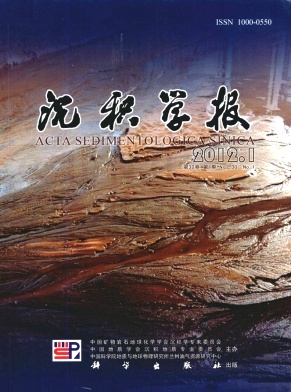Study on Differentiation of Secondary Hydrocarbon Generation for the CarboniferousPermian Source Rocks in the Eastern Linqing Depression
- Publish Date: 2012-02-10
-
Key words:
- coalbearing hydrocarbon source rock /
- secondary hydrocarbon generation /
- Multicyclic Superimposed Basin /
- eastern Linqing Depression /
- /
- /
Abstract: Controlled by the multicycle superposition and reverse evolution of basin, the source rocks of CarboniferousPermian coalbearing strata has experienced secondary hydrocarbon generation in the eastern Liqing Depression, which shows a strong deviation in the space. The simulation results of hydrocarbon generating history of these source rocks show that, the CarboniferousPermian source rocks entered the hydrocarbon generation window in the EarlyMiddle Triassic, then the hydrocarbon generation suspended in the whole region due to the Indosinian movement, after that the source rocks buried again in the MesoCenozoic and secondary hydrocarbon generation function occurred. The secondary hydrocarbon generation varies with different well blocks in the time and space. There are three secondary hydrocarbon generation stages in sags, first stage was in the Cretaceous period, second stage was in the Paleogene period, and third stage was in the Neogene period, the peak amount of hydrocarbon generating stage was in the Cenozoic period. Hydrocarbon contribution at the three secondary hydrocarbon generation stages was equivalent to about thirty percent in sags that the Paleogene was relatively thin. While sags that the Paleogene was relatively thick, hydrocarbon contribution in the Paleogene period was the most, which was more than fifty percent, then followed by the Cretaceous period, and hydrocarbon contribution in the Neogene period was the least. There are two secondary hydrocarbon generation stages in prominence, peak amount of hydrocarbon generating stage was in the Mesozoic period. Hydrocarbon contribution in the Cretaceous period was more than ninety percent. There are none secondary hydrocarbon generation stages in uplift. Most of the hydrocarbon that generated early period has been destroyed, while the hydrocarbon which generated late period is available on the geological conditions of hydrocarbon accumulation, this is a main target of oil and gas exploration. Differential subsidence is the main controlling factor of the differentiation of secondary hydrocarbon generation, which results from the three cycle superposition and reverse evolution of the basin. The uplift that formed at the last stage of the Indo Chinese epoch did not accept formation deposition unit Neogene period. The prominence that formed at the early stage of the Himalayan epoch absented Paleogene deposition. Formation deposition was continued in the sags, but formation deposition in the Paleogene period was differential. Source rocks in sag have entered in the mature to highmature stage and can be the gas kitchen of the late coalgas reservoir at the present.
| Citation: | Study on Differentiation of Secondary Hydrocarbon Generation for the CarboniferousPermian Source Rocks in the Eastern Linqing Depression[J]. Acta Sedimentologica Sinica, 2012, 30(1): 179-188. |






 DownLoad:
DownLoad: